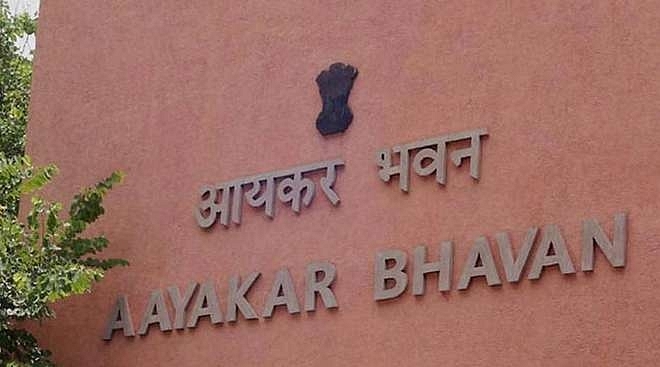Economy
Why One Part Of Fiscal Stimulus Must Include A Sharp Cut In Income Taxes
- The stage for gradually eliminating income tax and reducing corporate tax is being prepared by the robust growth in indirect taxes.
- We are effectively moving towards taxing expenditures rather than income, which may promote savings more than tax breaks on income.

Aayakar Bhawan and Income Tax Complex
Even as the government is mulling over the kind of fiscal stimulus needed to get the Indian economy out of the ditch, the most important consideration should be to figure out which kind of stimulus will bring back consumer confidence and India Inc’s animal spirits.
The answer should be cuts in individual income taxes and corporate tax, not sector-specific duty cuts.
We are already doing a lot of the latter. For example, the exemption from income-tax for companies focusing on affordable homes was given in fiscal 2016-17. Post-demonetisation, interest subventions of four and three per cent have been offered on loans upto Rs 9 lakh and Rs 12 lakh, for those buying homes based on annual salary limits of Rs 12 lakh and Rs 18 lakh respectively.
While the revival of jobs and growth will depend on a strong rebound in real estate and construction, in the short term, the fiscal stimulus is expected to focus on two areas: bank recapitalisation, and infrastructure.
But the one pick-me-up that will lift all spirits is income tax cuts. While it is possible to identify sectors which need a stimulus, any such exercise will essentially be arbitrary, and often raise demands from other sectors that feel left out. If, on the other hand, the decision on stimulus is left to ordinary taxpayers, only the deserving sectors will get their money.
In 2009, when the United Progressive Alliance government wanted to stimulate the economy in the wake of the global financial crisis, it offered excise cuts to a wide range of industries. In today’s situation, where the goods and services tax (GST) is just being implemented, any kind of sector-specific cut may be resisted by the GST Council, more so since the system is still to be smoothened out.
In this situation, and even from a long-term perspective, a sharp cut in income tax rates for individuals would enthuse many more millions out of the demonetisation-induced gloom and begin spending.
As for corporate taxes, Arun Jaitley is yet to make good on his promise to cut them to 25 per cent. He should try doing this in one stroke next February, and recoup the losses by eliminating various tax loopholes and concessions.
In the last budget, the personal tax rate was cut to 5 per cent on incomes between Rs 2.5-5 lakh, but this is clearly not doing enough to boost consumption and investment demand.
Absorbing the GST shock needs consumption to pick up faster, and the best way to do it is to abolish taxes altogether for those with incomes below Rs 5 lakh, and reduce taxes to 10 per cent for those earning upto Rs 10 lakh. For the rest, the top rate could be 20 per cent upto Rs 1 crore, with 30 per cent being the top rate for the super-rich. This may cost the government about Rs 1,00,000-1,50,000 crore in annual revenues, but a large part of it will return in the form of higher indirect tax collections. (My guesstimates here are based on actual tax numbers for AY 2014, where taxpayers reporting taxable incomes of upto Rs 5 lakh, which means total incomes of Rs 7.5 lakh, had Rs 88,000 crore of tax payable).
Long-term, the idea should be to either move towards a flat tax rate of 15 per cent for all (above Rs 5 lakh annual incomes), or an abolition of all taxes for those earning below Rs 1 crore.
Indians do not take kindly to taxes on income, but do not mind paying taxes which they cannot see easily – like indirect taxes, which get subsumed in product and service prices.
A Business Standard report today (27 September) notes that indirect taxes have hit an all-time high of 10.5 per cent of GDP under Narendra Modi, with revenues growing more than twice as fast as the underlying economy. The newspaper says that indirect taxes grew at the compounded rate of 22.3 per cent over the last three years when GDP (in current prices) grew at 10.6 per cent. While this is largely due to the high taxes collected on petro-fuels, with GST kicking in, the trend in indirect tax collections is likely to be much higher than average economic growth.
Put simply, the stage for gradually eliminating income tax and reducing corporate tax is being prepared by the robust growth in indirect taxes. Since indirect taxes are essentially taxes on expenditure, we are effectively moving towards taxing expenditures rather than income. Taxes on expenditure may promote savings more than tax breaks on income. And that is a good thing.
Support Swarajya's 50 Ground Reports Project & Sponsor A Story
Every general election Swarajya does a 50 ground reports project.
Aimed only at serious readers and those who appreciate the nuances of political undercurrents, the project provides a sense of India's electoral landscape. As you know, these reports are produced after considerable investment of travel, time and effort on the ground.
This time too we've kicked off the project in style and have covered over 30 constituencies already. If you're someone who appreciates such work and have enjoyed our coverage please consider sponsoring a ground report for just Rs 2999 to Rs 19,999 - it goes a long way in helping us produce more quality reportage.
You can also back this project by becoming a subscriber for as little as Rs 999 - so do click on this links and choose a plan that suits you and back us.
Click below to contribute.
Latest